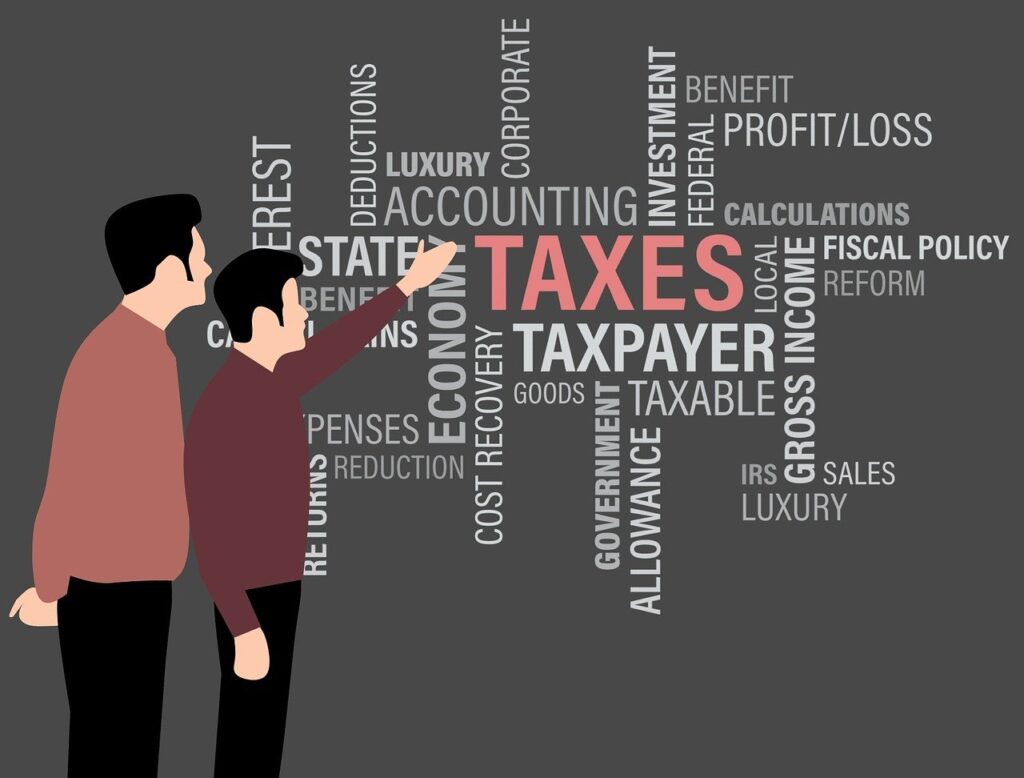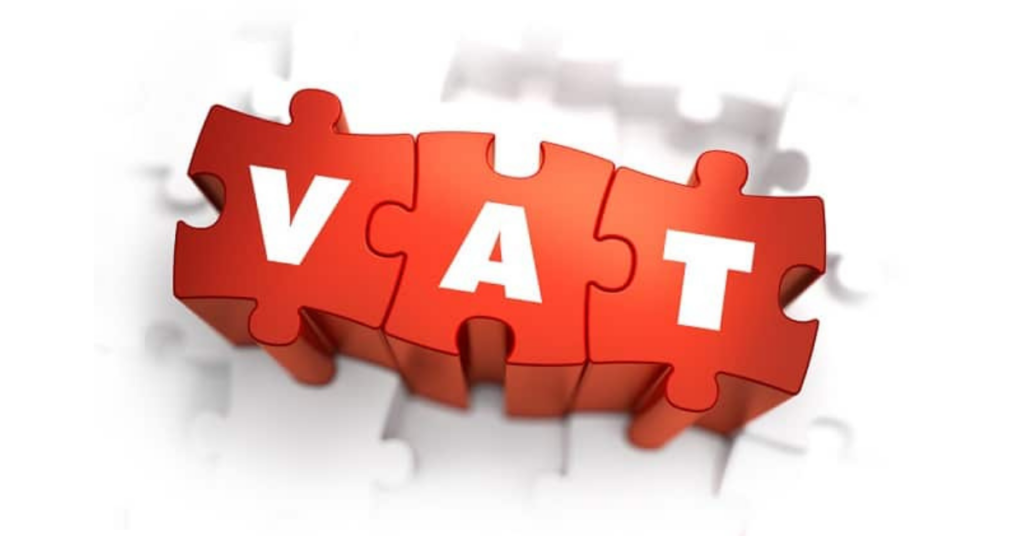GST and VAT are the government’s counter-taxation systems to the widely held valuation of goods and services throughout the country. When it comes to the older tax scheme, such as the value-added tax, it was the previous way of levying taxes on the general population, while the goods and services tax is intended to shift this approach to customers. The CA services for Tax and the CA services for business play a vital role in making the process easy. MVAT scheme is used by Maharastra Government to collect sales taxes.
There are some distinctions between GST and VAT:
System based on taxes
The value-added tax is also a summary-based tax, in which taxpayers are required to file a tax return with a summary of sales and purchases after a certain period of time. While the Goods and Services Tax is a transaction-based tax system that requires timely submission of sales transactions with full and accurate data. The CA services for tax provide us a better understanding and make the process easier.
Operational Mode
Previously, VAT was an offline taxation system in which a person had to file a return on a physical file and send it in person to a nearby income tax department with an accountant’s attested statement. While the products and services are entirely dependent on the internet, any return and tax data will be submitted online with a corresponding definition.
Annual Return to be Filed
Under GST, a taxable individual must electronically file the reports of all sales by the 11th day of the month in GSTR-1 following the taxable month, as well as a report of information regarding sale and purchase by the 20th day of the month in GSTR-3B following the taxable month. Annual returns must be filed in GSTR-9 by the 31st of December of the following fiscal year.

There is an annual return GSTR-4 for composition dealers that is due on April 30th. In the VAT scheme, the seller is required to file quarterly VAT returns, while the assessee is required to file a sales and purchase register. The assessee is also required to file an annual return at the end of the year. Vat dealers are required to file quarterly returns in most states, but some states, such as Maharashtra and Karnataka, also have monthly return provisions.
Credit for Input Tax
This cascading impact will be removed with the implementation of the GST Law, as we will be able to take credit for interstate sales purchases as well as credit for services sold. As a result, the prices of goods and services fall, the inflation rate falls, and economic growth accelerates.
Tax credits for CST cannot be applied against VAT due under the VAT scheme, resulting in a cascading effect.
Reduction of Cost
Since there will be a single tax imposed, the goods and service tax, the implementation of GST legislation will result in a decrease in the cost of goods.
While a trader cannot use credit from other indirect taxes, such as service tax credit, to pay their VAT obligation under VAT law, this would result in a rise in the cost of goods.
Interstate Sales Tax
Inter-state sales and acquisitions will be subject to IGST under the GST rule. CST is imposed on interstate purchases and sales of products under the VAT Law.
Deviations of Input Tax Credits
The biggest issue of ITC mismatch will be solved under the GST rule, as all sales details will be filed by the 11th day of the following month, and all summarised details of sale and purchase will be filed by the 20th day of the following month. As a result, all of the details will be filed on time, and then the monthly return will be filed, ensuring that all of the details are cross-checked.
Although under the VAT scheme, there is a significant problem of ITC mismatch since there is no system in place for filing reports of sales and purchases by a specific date prior to filing the VAT return, resulting in ITC mismatch.
As a result, there are some distinctions between GST and VAT. And GST would be a likely solution to a variety of issues in the VAT system.
In India, VAT is one of the indirect taxes. It is a straightforward and clear system with little departmental control due to dealer self-assessment and little space for tax avoidance due to strict penalties. The state has the authority to levy a tax on the selling or purchase of items other than newspapers, according to entry 54 in List II (State List) of Schedule VII to the Indian constitution. As a result, there are different VAT systems in India for each state. As a result, in Maharashtra, the MVAT scheme is used to collect sales taxes.

What is the point of levied VAT taxation…??
VAT is levied on the sale of products, not on the production of the product. It is a multi-tiered tax scheme that is applied to the sale of products. VAT is a tax on the value-added at each point, and the profit of setoff would be extended from manufacturer to retailers so that the tax is borne by the final consumer. For Vat to be levied, two requirements must be met: enthusiasm and use of products. For example, VAT is paid on machinery rental since ownership is not transferred in that transaction, but passion and use of goods is.
What is the MVAT Act’s description of goods…?
Goods include livestock, growing crops, grass, trees, and plants, as well as property in such attached to or forming part of the land that is agreed to be severed before sale or under the contract of sale, but excludes newspaper, actionable claims, money, stocks, shares, securities, or lottery tickets. It also includes property attached to or forming part of the land that is agreed to be severed before sale or under the contract of sale.
How is the selling price determined under the MVAT Act…??
The amount of valuable consideration paid or payable to a supplier for any sales rendered, including any sum charged for anything done by the seller in respect of merchandise at the time of or before delivery, except the expense of insurance for transit of installation, which is separately charged. Our government establishes the MVAT rate schedule.
Which dealers are subject to the MVAT Act…?
A dealer is required to pay tax based on the amount of sales he or she makes within the state. Under section 2(8) of the Act, the term “dealer” has been specified.
It covers anyone who buys or sells products in the state for a commission, remuneration, or otherwise in the course of their business, or in conjunction with, incidental to, or consequential to such business. Broker, commission agent, Auctioneer, PWD, Department of Union Government, State Government, and so on are all examples of the expression. Agriculturalists, educational institutions, and transporters, on the other hand, are not considered dealers. The VAT registration threshold for the dealer is Rs 10 lac. The CA services for Business takes the complete care of these filings.
| Sr. No. | Dealer’s category | Total sales turnover to exceed | Turnover of sale or purchases of taxable goods |
| 1 | Importer: | ` 1,00,000/- | Not less than ` 10,000/ |
| 2 | Others (Including manufacturer, reseller, liquor dealer, works contractors, leasing etc.) | ` 10,00,000/- (With effect from 01/07/2014 and Rs. 5,00,000 up to 30/06/2014) | Not less than ` 10,000/- |
| 3 | Registration on a voluntary basis | – NA- | – NA- |
What are the rates imposed by the MVAT Act…?
The following prices are paid on the sale of goods under the MVAT Act.
| Sr. No | Particular | Rate | Applicable |
| 1) | Schedule A | Nil Rate | Tax-free products, i.e., essential items |
| 2) | Schedule B | 1% | Bullion, jewellery, precious stones, diamonds, and other similar items |
| 3) | Schedule C | 2,3,5% | IT products, declared goods, clothing, drugs and pharmacies, and medicines, among other things |
| 4) | Schedule D | 20% to 34% | Liquor, Motor Spirit, ATF, and other similar substances |
| 5) | Schedule E | 12.5% | Residuary Entry |
Which type is required to file an E-Return with the MVAT and CST?
For the purpose of filing an E return under the MVAT & CST Act, there are six forms that are applicable to different categories of dealers. These categories are as follows:
| Sr. No | Name of Form | Applicable |
| 1) | Form 231 | Dealer on a regular basis |
| 2) | Form 232 | Composition of a used car dealer, a retailer, a work contract, a pub, a club, and caterers, along with a few other things. |
| 3) | Form 233 | Dealers that are in the business of executing construction contracts, leasing, and other similar services |
| 4) | Form 234 | PSI units with an Entitlement Certificate are dealers. |
| 5) | Form 235 | Oil companies and every other dealer selling motor spirits is told by the dealer. |
| 6) | Form III E | Dealer who sells across state boundaries. (According to Trade Circular 15T of 1981, 52T of 2007, and 15T of 2009, no CST Return is needed if interstate sales are Zero during the period.) |
How many different ways are there under the CST Act…?
The following ten forms are needed for claiming the concessionary rate, application for registration, and so on: –
| Sr. No | Form | Description | Frequency |
| 1) | A | Registration Application | Once |
| 2) | B | Registration certificate | Once |
| 3) | C | Purchasers must sign a declaration to purchase merchandise at a reduced price. | To be collected once a quarter and submitted once a quarter. |
| 4) | D | A form of certificate used to make government purchases (D Form cannot be issued in case of sale made to government on or after 1-4-2007) | After the 01-04-07, no questions arise. |
| 5) | E-I /E-II | Certificate for in-transit sale | To be collected once a quarter and submitted once a quarter. |
| 6) | F | Form for goods acquired on stock transfer from branch/consignment agent | To be collected once a quarter and submitted once a quarter. |
| 7) | G | When the C Form is lost, an indemnity bond is required. | When required |
| 8) | H | Export Certificate | To be collected once a quarter and submitted once a quarter. |
| 9) | I | SEZ Unit Certificate | Laws aren’t specific about this (But should be submitted before assessment) |
| 10) | J | A certificate must be given by a foreign diplomatic mission or consulate in India, or by a United Nations agency. | Up to the first evaluating authority’s evaluation. |
What is the MVAT and CST payment and return deadline…??
The due date for payment and filing of returns under the MVAT and CST Acts is determined by the periodicity. As a result, the table below is useful for understanding due dates.
| Sr. No | Periodicity | Due Date for Payment | Due Date for Filing of Return |
| 1) | Monthly | 21st of the Next Month | 31st of the Next Month |
| 2) | Quarterly | 21st of the Next Month from End of Quarter. | 31st of the Next Month from End of Quarter. |
| 3) | Half yearly | 30th of the Next Month from End of half year. | 10th day from the date of Payment |
What are the MVAT Act’s Penalties…??
In the MVAT Act, a penalty is imposed in the form of late fees for MVAT returns, as well as interest, and these penalties are as follows:
| Sr. No | Particular | Amount |
| 1) | Fees for late filing (Return is not filed within due date) | If the return is filed within one month of the due date, the penalty is Rs 1000; otherwise, the penalty is Rs 5000. |
| 2) | Interest u/s 30(2) (Payment is not received by the due date) | Late payment interest rates are calculated as follows: 1.25 percent per month for the first month, 1.5 percent per month for the next two months, and 2 percent per month after that (As Per latest Amendment) |
Let’s Summarize!
Value additions are subject to VAT at each point. The scheme contemplates the imposition of tax on each point of the transaction, as well as the ability to deduct tax paid on transactions. Taxes are levied using five different schedules. The MVAT & CST Act has six different forms for filing returns. The payment deadline and how to file a return are described in detail above. If a return is not filed or payment is not received by the due date, penalties and interest may be assessed.

